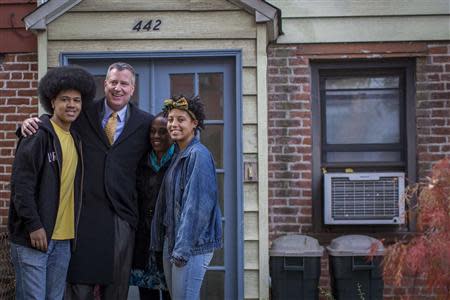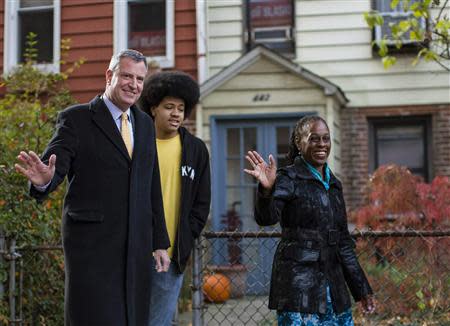New York's next mayor de Blasio to live in Gracie Mansion
By Edith Honan NEW YORK (Reuters) - A 214-year-old mansion that has served as the official residence for New York City mayors since World War Two will welcome its first full-time occupants in 12 years when Bill de Blasio is sworn in as mayor in January. De Blasio announced on his website on Wednesday that he will move his family into Gracie Mansion from their Brooklyn apartment. The Federal-style mansion on the banks of the East River has been without full-time occupants since Rudolph Giuliani moved out in 2001 amid marital troubles. "It's a tough decision," de Blasio, who has cast himself as a family man with middle-class roots, said in a statement. He had delayed deciding where he and his family would live, saying they would take the subject up as a group over the Thanksgiving holiday. "Brooklyn is our home and Park Slope is our neighborhood. And we love these places. In many ways, they've come to define who we are," the statement said. Gracie Mansion has been home to mayors since 1942 when the legendary Fiorello La Guardia moved in. It has served as host for such notables as the Dalai Lama and Nelson Mandela. Archibald Gracie, a merchant, built the mansion for his country estate in 1799 in what was then a sparsely populated part of Manhattan. Bloomberg's predecessor, Giuliani, grew estranged from his second wife, Donna Hanover, and moved out of the mansion in 2000. Hanover and the couple's two children continued to live there. Bloomberg, a billionaire who leaves office on January 1 after 12 years, opted to remain in his Upper East Side townhouse close to the Metropolitan Museum of Art rather than relocate to the city-owned property. Bloomberg has helped finance its restoration with his own money and uses it as an event space for city functions. De Blasio has vowed to address the city's affordability gap. While the city grew safer and cleaner under Bloomberg with more park space and a proliferation of luxury high-rise towers, apartment rents in New York City increased about 44 percent over the past decade and the cost of a monthly subway card rose 60 percent. (Reporting by Edith Honan; Editing by Daniel Trotta and Leslie Gevirtz)


